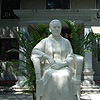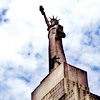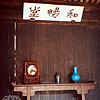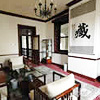On October 10, 1911, the Wuchang Uprising broke out. With one province after another declaring independence from the Qing Dynasty government. As a result, the rule of the Qing Dynasty collapsed, marking an end to the feudal autocratic monarchy of more than 2,000 years and founding the first republic in Chinese history.
To pay tribute to the 100th anniversary of the Chinese Revolution of 1911, with the guidance of Chinese Ministry of Culture, our team designed the photo album which is named "A Century of Change". Through the feature, we will share our insight from our hard work with the readers too.
Painting and Calligraphy Show Held at Jia Yi’s Residence
A painting and calligraphy show was held on September 26 at Jia Yi’s Former Residence to commemorate the Revolution of 1911. The year 2011 marks the 100th anniversary of the great revolution, which led to the collapse of the Qing Dynasty (1644-1911) and brought an end to imperial rule in China.
|
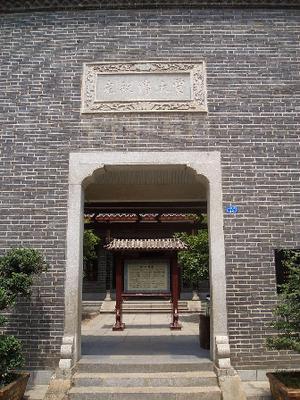 |
A large number of noted painters and calligraphers took part in the show and produced more than 20 pieces of Chinese painting and calligraphy.
Jia Yi (200 -168BC) was a famous statesman and writer from Western Han Dynasty (206 BC-AD 24). As one of the oldest relics in Changsha City, Hu’nan province, Jia Yi’s Former Residence has the longest history among former residences of Chinese celebrities.
From the second year of the reign of Emperor Guangxu during the Qing Dynasty to the Revolution of 1911, Jia Yi’s Former Residence had been restored thanks to abundant funds. It has attracted numerous visitors and has become an important place for local officials and celebrities to get together. During the Revolution of 1911, Jia Yi’s Former Residence was regarded as the center for revolutions in Hu’nan Province.
“Before the Revolution of 1911, revolutionaries in Hu’nan Province established large numbers of anti-Qing organizations to make preparations for the revolution. The secret headquarters of the organizations were located at Jia Yi’s Former Residence, including ‘Hu’nan Sports Association’, ‘Railway Assistance Association’ and ‘Hu’nan Branch of Club of the Revolution of 1911,’” said Wu Songgeng, Curator of Jia Yi’s Former Residence. “‘Hu’nan Sports Association’ was a place to train sports talents on the surface, but it was in fact an organization for the revolutionaries to contact and train military personnel, where the teaching methods in Japan Zhenwu School were adopted. Therefore, it is of great significance for us to hold a painting and calligraphy show today at Jia Yi’s Former Residence.”
Painter He Liang drew a picture called A Single Twig of Plum Flowers Brings Us the Spring. “Everyone likes plum flowers. The spring will come as soon as the plum trees bloom,” He said. “White plum flowers are my favorite. They defy frost and snow and bring us the spring, which causes me to recall the revolutionaries who defied difficulties and dangers and brought us peace and happiness.”
Translated by Yang Guozhen
Editor: Shi Liwei
1、The Preparation of the Revolution
In November 1894, Sun Yat-sen setted up the Xingzhonghui in Honolulu. The next year in February, Sun built the headquarters of Xingzhonghui in Hongkong, and put forward the first guiding principle of the China democratic revolution.
2、The Uprising of the Revolution
The incompetent and corrupt rule of the Qing Dynasty caused extreme anger in Chinese people, finally, In June 1911, the Railway Protection Movement in Sichuan became the trigger of the Chinese Revolution of 1911.
3、The Success and Failure
December 1st, the Qing government signed the armistice with the revolutionary army, and the battle was stopped for three days. This truce is a key turning point that marks the revolution army changed the view from armed struggle to the politics of compromise.
4、Historic
The Chinese Revolution of 1911 is a great bourgeois-democratic revolution, which has far-reaching historic in modern Chinese history.

